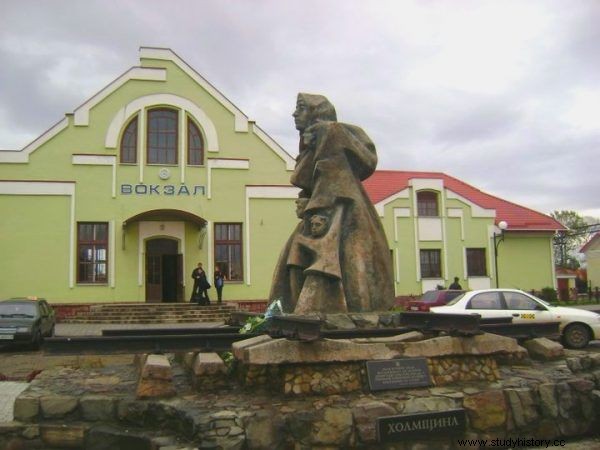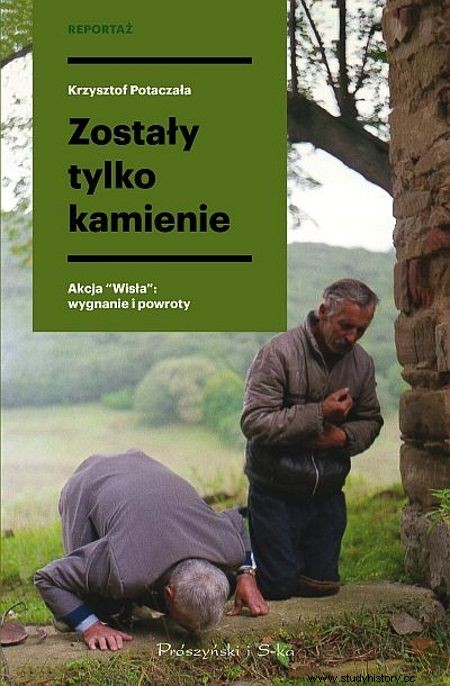It is said that the Ukrainians displaced in 1947 faced economic advancement because they found themselves in better developed lands. Meanwhile, 75% of the farms in which they were settled were destroyed, while 30% required complete reconstruction. What happened to their own homes?
Operation "Vistula" began on April 28, 1947 and lasted until the end of July. It involved approximately 140,000 civilians from south-eastern Poland, especially Ukrainians, who were to be forcibly relocated to areas newly incorporated into Poland. According to the instructions of the Ministry of the Recovered Territories, the displaced persons were not allowed to return to their homeland. Meanwhile, the vast majority of their possessions remained in their small homelands.
The settlers found their way, often together with cattle and pigs, to former German farms, which were not sown and planted, and were often in a state of ruin. To make it suitable for living, the victims of Operation Vistula had to start their stay in a new place by patching the roofs or inserting broken windows and doors. Meanwhile, in areas where they had inhabited for generations, and from which they had been hastily removed, uncovered crops were left behind. The authorities did not care much about it. As Katarzyna Szul says, displaced at the very beginning of the action:
[…] in Werechata there is a lot of troops, noise, some meeting, announcements. People did not believe that they had to leave theirs and get out. […] He was already whitening the oats, the tucked potatoes were blooming, and we were getting to the road. We were led away with every inhabitant, as far as Bełżec. Bełżec had bad associations. From the very name it blew death (quoted after: "Only stones remain. Operation Vistula:expulsions and returns" ).
Smoke over the Bieszczady Mountains
Ewa Stołycia (Mastyła), from the town of Krywne, was deported in May. Her family was at least lucky enough to start throwing people out of their homes from the top end of the village, and they lived in the middle of the houses, so they had a bit more time to grab their belongings.

A woman with small children and a bundle on her back. Monument commemorating the deportations of Ukrainians from the Lemko region, Chełm region, Nadsania and Podlasie, standing in Sambor (photo:Bulka UA, license CC BY-SA 3.0)
The military men intimidated the inhabitants so that they feared that in case of resistance, they would be killed. Women immediately rushed to bake bread on the road, men led the cows from the stables, tied them to carts and packed farm equipment. As Stołycia tells, quoted by Krzysztof Potaczała in the book “Only stones are left. Operation Vistula:Exiles and Returns " :
And we women carried barrels of cabbage, grain bags, flour, peas, onions. We were free to leave some lumber, but not the food. We have gone through too much in recent years to waste it. Once the family was standing outside, and what had been taken out of the house and barn on the carts, the order was given to burn the farm. Everything happened so quickly that in no time Kryve turned into a sea of fire. Several hundred houses, barns, stables and woodsheds were burning at once. It was a crime for me.
In 1947, at the turn of spring and summer, you could see the glow over the Bieszczady Mountains. At that time, Polish and Ukrainian farms were burning, from which the inhabitants were thrown out. Some of those who survived were settled by Poles repatriated from the east, or from the Lublin, Rzeszów and Kraków voivodeships, who wanted to take over the finished buildings and land. In this way, lands that had never been especially Polish were "repolonized". As Eugeniusz Misiło emphasizes, even if post-Ukrainian farms and fertile fields lay fallow, the owners were not allowed to return to them. If they tried to do so, the UB packed them straight to a camp in Jaworzno, often referred to as a concentration camp.

In 1949, the authorities decided to regulate the whole issue legally. Ukrainians settled in the so-called Regained Territories were granted ownership of the farms they had occupied. At the same time, they were deprived of their property rights to any property left in their homeland. It is worth remembering that they were not allowed to move or move freely. Misiło calls it a kind of feudal assignment to the land that they were never allowed to leave again.
In the second half of the 1950s, the iron muzzle of the authorities slightly loosened, and the expelled Ukrainians also enjoyed some freedom. Some of them began probing the possibility of returning to their homeland. The people who traveled southeast were shocked. Often only cemeteries and churches remained of their hometowns, and burnt farms were overgrown with bushes and young forest, interspersed with fragments of old orchards. In the past, some of the most populous lands in Poland today turned into complete desolation, and only stone foundations remained after many villages.
Information sources:
- Action "Vistula". Documents and materials , ed. Eugeniusz Misiło, Ukrainian Archives 2013.
- Motyka G., From the Volhynia massacre to Operation "Vistula". Polish-Ukrainian conflict 1943-1947 , Wydawnictwo Literackie 2011.
- Memorable year 1947, edited by Maria E. Ożóg, Wydawnictwo Wyższa Szkoła Pedagogiczna, Rzeszów 2001.
- Potaczała K., Only stones left. Operation "Vistula":expulsion and returns , Prószyński i S-ka 2019.
- Wiatrowycz W., The Second Polish-Ukrainian War 1942-1947 , Ukrainian Archives 2013.
Get to know all the shades of the Polish-Ukrainian conflict:
